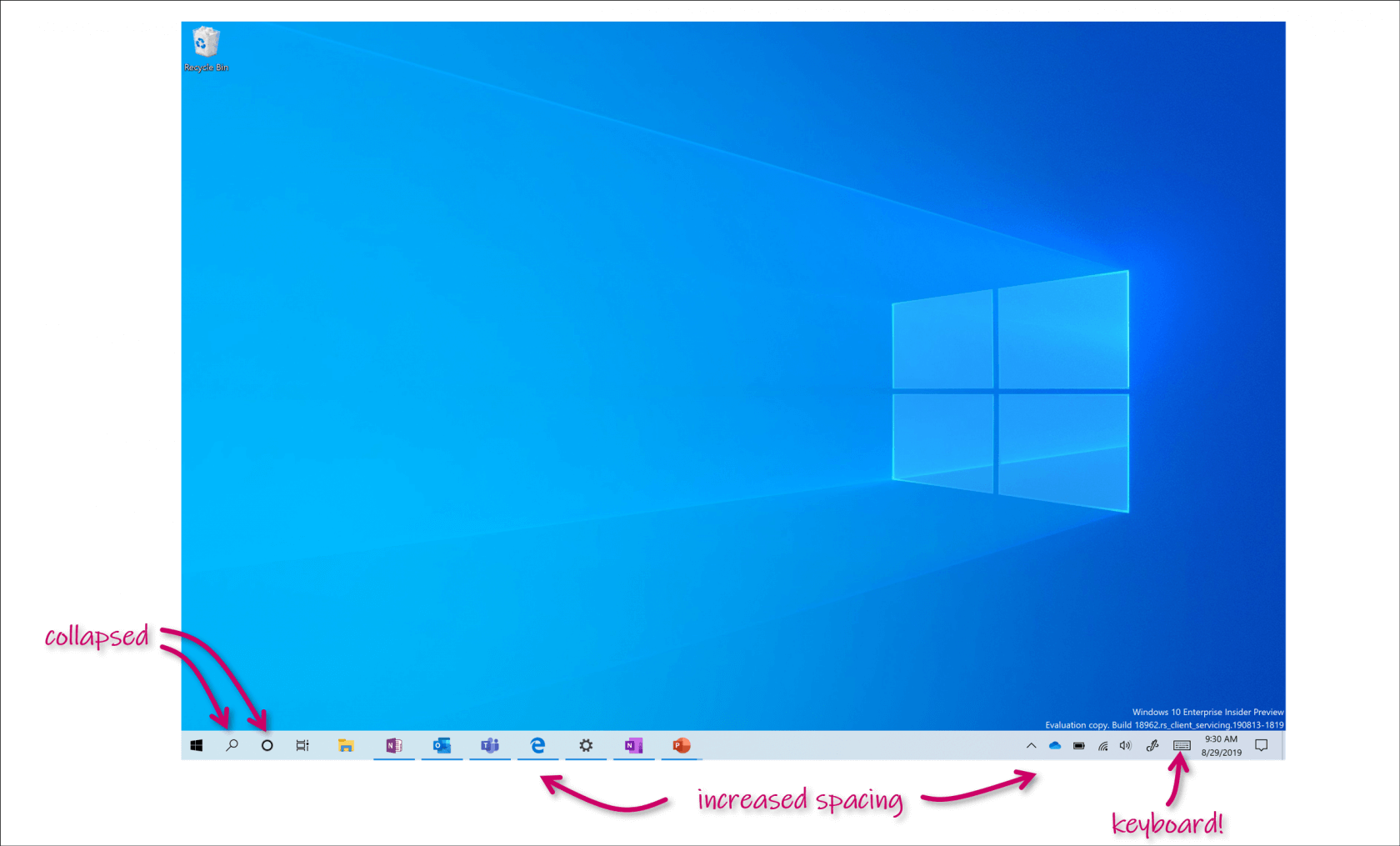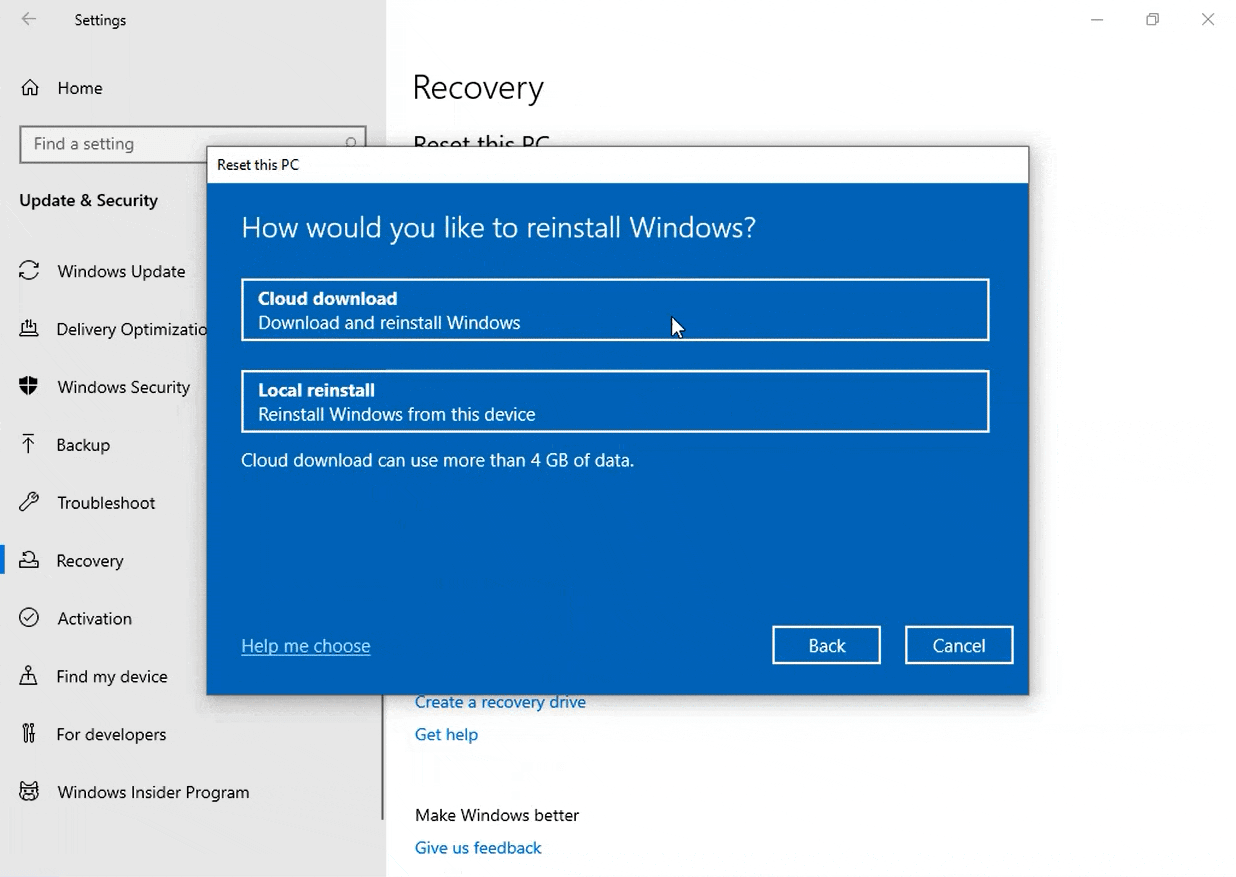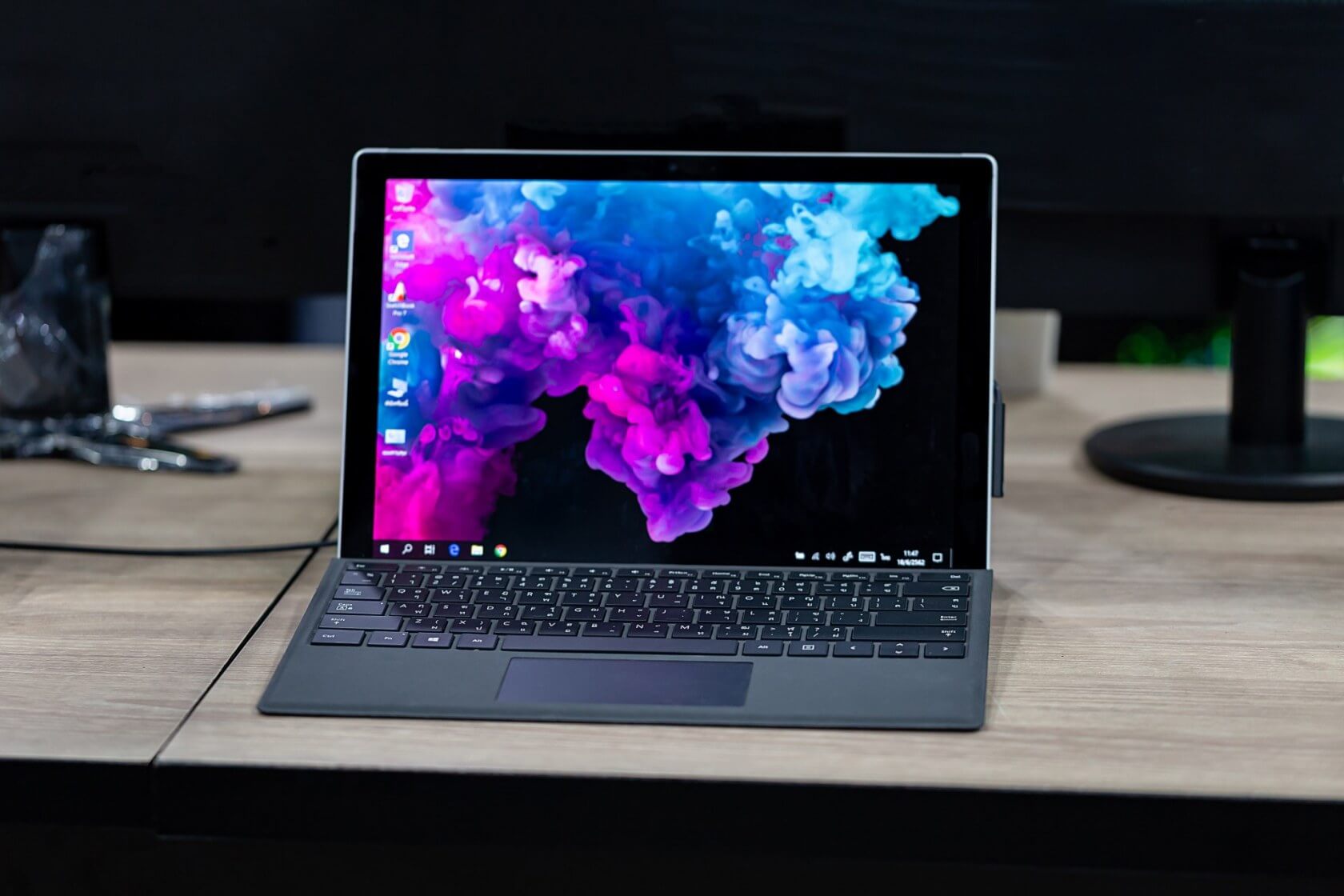As Microsoft increasingly shifts its resources toward laptop-tablet hybrid devices (not unlike the rumored dual-screen Surface), the company clearly feels it needs to make some tweaks to the Windows 10 experience to make it better-suited to such gadgets.
As part of Windows 10's Insider Preview Build 18970 (20H1), Microsoft has begun rolling out a redesigned UI for Windows 10 on tablets. So far, the changes are relatively minor, but will still likely be noticeable for regular tablet mode users.
The tweaks in question include increased spacing between taskbar icons, collapsed Search and Cortana buttons – they're now icons instead of a full text box – a "touch-optimized" layout for File Explorer, a manual keyboard taskbar button, and automatic touch keyboard activation whenever a text field is tapped on. Microsoft also says a few "small changes" have been implemented into the tablet section of Windows 10's Settings interface, though we don't know what those are.

As we said, these are fairly small adjustments for now, but more will undoubtedly come in the future if this update is received well. If you happen to own a Windows 10 2-in-1 convertible PC, you can access this functionality by joining the Windows Insider Program's Fast ring (just be prepared for some "painful" bugs).
Once you've done so and grabbed the latest update, just fold back or remove your device's keyboard and the interface should automatically change to the new mode.

Other features and changes arriving in Preview Build 18970 include the previously-teased Cloud System Recovery option, dozens of bug fixes (major and minor), and the continued rollout of Microsoft's new Cortana experience.
The Cloud Recovery option, in particular, will likely be of interest to many users. Previously, the only way to perform a full, clean reinstall of Windows through System Restore was to have your installation media handy.
Now, Insiders (and eventually regular users – we hope) can simply hit the "Cloud download" button during a Restore action to have Windows 10 pull the needed files from Microsoft's servers.
